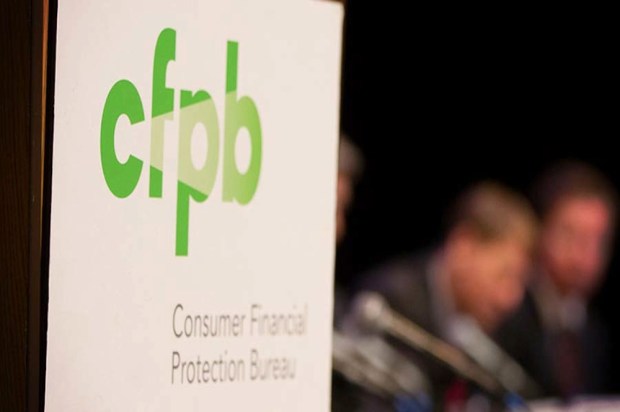Court Case Challenges CFPB’s Power

A storm is brewing over the realm of the Consumer Financial Protection Bureau’s (CFPB) power as the government agency enters a legal battle set to be reviewed by the District of Columbia Circuit Court of Appeals on April 12.
The fracas emanates from CFPB Director Richard Cordray’s decision to overrule an in-house judge’s decision that slapped New Jersey-based lender PHH Corp. with a $6 million fine for taking illicit “kickbacks” from mortgage insurers that led to a rise in cost for borrowers.
The lender’s protest over the judge’s decision backfired on the company when Cordray demanded PHH Corp. to pay 18 times more, or $109 million, for ill-gotten gains and continually violating the law with monthly payments from its reinsurance contract, according to The Wall Street Journal.
While PHH initially argued the judge’s decision, saying it was an “overly aggressive interpretation of an old law,” Cordray saw fit to take an even tougher stance on the case, as it was, by foundation, the bureau’s mission to take a tough approach towards years of sloppy consumer protection.
The CFPB argued that the actions of PHH led to a rise of consumer costs, as it referred new borrowers to mortgage insurance companies and then exerted pressure on those companies to buy a PHH affiliate’s reinsurance, which, in turn, directed up to 40 percent of those insurance premiums (kickbacks), or hundreds of millions of dollars, into PHH’s coffers, thereby raising costs for consumers over the years, WSJ reported.
“This brazen disregard for judicial authority, agency precedent and fair notice is a symptom of the larger constitutional problems,” PHH argued in a court filing. “The CFPB places legislative, executive and judicial power all ‘in the same hands’ of a single person — what James Madison called ‘the very definition of tyranny.’”
PHH’s statement in the filing refers to CFPB’s single director structure, which lays aberrant power in the hands of the director in order to make swift, extensive changes.
“The PHH lawsuit is the first serious test of the CFPB’s enforcement authority,” said Isaac Boltansky, a Compass Point Research & Trading analyst, in an interview with WSJ. “If the court rules against the bureau, the calls for a change to its leadership structure will intensify.”
The CFPB justifies the legitimacy of its actions by citing its continued compliance with the 2010 Dodd-Frank law and its effectiveness at resolving over 770,000 complaints since its inception, as well as handing over $11 billion in compensation for damages to 25 million consumers.
However, with its swift actions, the CFPB seems to be attracting more negative attention and questions over its power to overrule judges and monitor a range of sectors, varying from mobile payments to college accreditation.
In ways, the CFPB is doing more harm than good to the finance industry, argued MPD CEO Karen Webster. “Having a virtual dictator protecting consumers might be just fine (although it seems more like something they’d do in China or Russia) if that dictator looked at the bigger picture, understood the law of unintended consequences and generally did things that helped consumers and sanctioned the truly bad actors.”
“The problem is that the CFPB never seems to think beyond its immediate objective of slaying anyone who makes money from selling financial products to consumers,” she added.
While the CFPB has been inundated with a slew of cases questioning its authority over matters, most of them couldn’t hold against the bureau in court.
As for the case of “PHH Corporation, et al. v. CFPB,” both parties seem to agree that Cordray’s decision to overrule the judge and increase the fine by 18 times is based off of his deviated interpretation of the Department of Housing and Urban Development’s (HUD) Real Estate Settlement Procedure Act (RESPA), which was enforced to control artificial inflation of home sale transaction costs by realtors and lenders.
Cordray wrote that HUD’s interpretation of RESPA had been ““inconsistent with my textual and structural interpretation … I reject it.”
